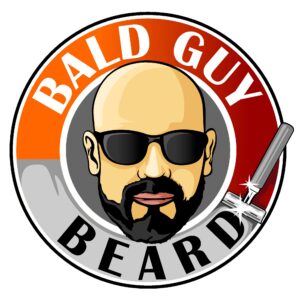A balding beard – also known as alopecia barbae – affects a percentage of men and manifests itself as small bald patches in the beard area.
Here’s a short overview on the condition known as Alopecia since it manifests in several different ways.
Alopecia areata describes complete baldness – a complete lack of body hair. It is the overall term used to describe this hair loss condition suffered by both men and women.
Alopecia barbae refers to the condition when it strikes the beard area of men.
The National Alopecia Areata Foundation (NAAF) estimates that Alopecia areata affects 6.8 million people in the US with a lifetime risk of about 2.1%. The condition affects both men and women, can strike at any age and is prevalent in all ethnic groups.
Reasons

Hair loss in general is caused by a number of factors that combine heredity, genetics and age. Specific reasons include anemia and protein deprivation.
Temporary hair loss can also occur due to stress, chemotherapy and other medication/drugs, and various examples of hormonal changes.
Male pattern baldness is believed to affect up to 50% of the population. Men and women both naturally lose hair as they age.
Alopecia is an autoimmune skin condition and doctors aren’t entirely sure why it occurs. Well-known people with the condition include NFL player Ryan Shazier and former NBA player Charlie Villanueva who actually has a variation of the disease called Alopecia universalis.
Alopecia areata can only be passed to the child by both parents to some degree for it to occur. In all likelihood, you don’t have alopecia even if you experience hair loss.
The most common form of Alopecia is referred to as Alopecia areata patchy which tends to manifest itself as one or more hairless patches of skin on the body ie. the scalp, beard area.
Alopecia barbae Symptoms

Alopecia barbae specifically occurs in the beard area, tends to come on suddenly and appears as a small patchy bald spot(s).
The bald spots tend to be about the size of a 25 cent piece and the affected area tends to be itchy before the hair loss which might lead to you scratching or itching it as a result. You might then experience redness, swelling or inflammation.
Alopecia barbae Treatment

There is currently no cure for Alopecia in general. For someone like Charlie Villanueva with Alopecia unversalis, he has no hair anywhere on his body and never will.
For most people who suffer from an onset of Alopecia, the hair will most likely grow back. Hair follicles remain dormant and can grow back even after long periods of significant hair loss.
For guys who suffer from Alopecia barbae, you have several options.
Shave the area in question
One option of course is to refrain from growing facial hair or to limit the growth of facial hair in the affected area(s) if possible. Similar to guys who shave their head when they begin to lose their hair.
If you’re deadset on growing facial hair though, read on…
Various hair loss medications exist that you might consider. Rogaine (Minoxidil), DPCP and Anthralin are three such medications. Speak with your doctor or dermatologist more specifically to learn more.
Time
Time often heals all wounds…as mentioned above, sometimes hair loss does correct itself and hair growth returns. This is especially true if your hair loss is temporary due to stress or another medical condition that can correct itself.
Home remedies
Although the health benefits are not proven, there a number of supplements and natural options that people claim can help with hair loss.
Garlic, aloe vera, wheatgrass, fish oil, probiotics and folic acid are just a few.
A research study from 2016 suggested that a marine complex supplement called Viviscal may help to regenerate hair and deal with hair loss.
Visit a doctor
Before consuming any medication or spending your money on a supplement or drug, your best bet is to see your doctor to determine the underlying cause.


